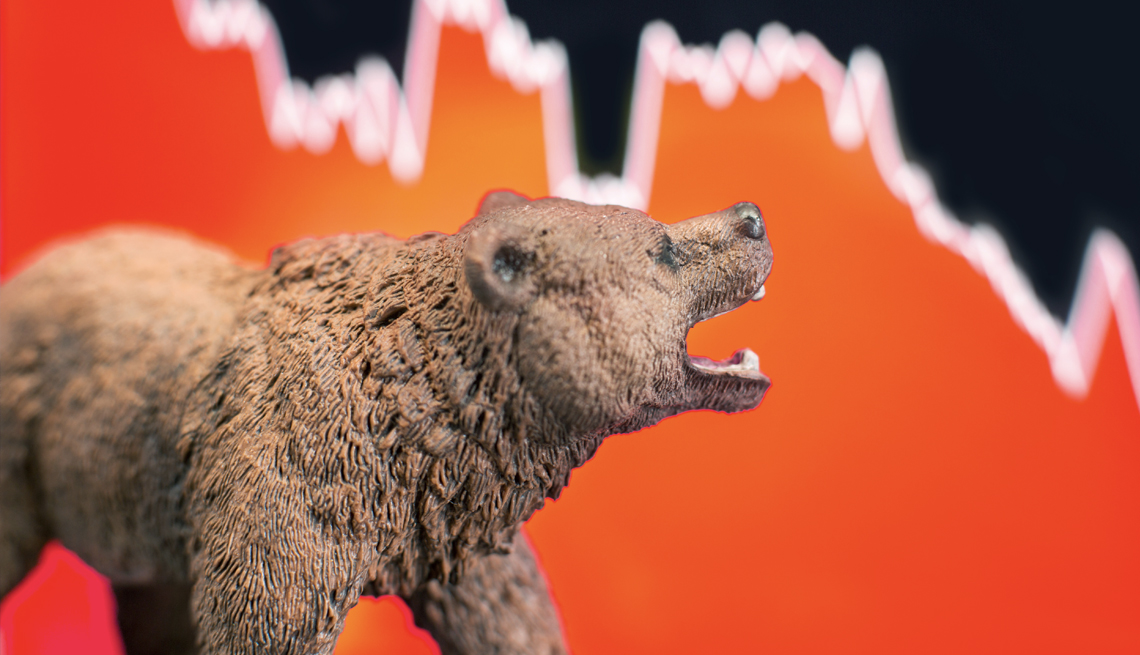Staying Fit
Financial experts don’t always agree on much, but one thing they do agree on: Don’t take withdrawals from stock mutual funds in a bear market if you can avoid it. You’ll just make matters worse.
This is especially important to keep in mind if you are making automatic monthly withdrawals from your nest egg, as many retirees do. Although automatic withdrawals are handy, they can sometimes backfire when stocks are suffering sustained losses, as they have been this year.


AARP Membership— $12 for your first year when you sign up for Automatic Renewal
Get instant access to members-only products and hundreds of discounts, a free second membership, and a subscription to AARP the Magazine.
Count the cost
Bear markets, defined as a decline of 20 percent or more from the most recent market high, come with their own cruel calculus: To get back to even, you must earn a larger percentage than you lost. For example, if you lose 50 percent in an investment, you need to earn 100 percent to get back even. To get even from a 20 percent loss, you’ll need to earn about 25 percent to get where you were before the bear clawed your account. The S&P 500 index, the main gauge of U.S. stock performance, has fallen into a bear market in 2022.
Let’s say that on January 1, 2022, you had $100,000 in a low-cost, broad-based stock index fund. Good choice! You get diversification and don’t pay much in fees for it — and sometimes, nothing at all. But bear markets can be cruel. By the end of March, you had just $78,615 — a 21.89 percent loss, according to Morningstar, the Chicago investment trackers. If you panicked and moved your remaining money into a money market fund, you’d have to guess exactly when to get back into stocks — something that most investors mistime. In the meantime, you’d be earning about 2 percent on your investment.
Even if you’re determined to sell, you’re generally better off waiting a bit, says Sam Stovall, chief investment strategist at CFRA, a stock research firm. Bear markets end with a whimper, but bull markets start with a bang. “It has taken an average of only three months to go from the low to the 20 percent advance,” Stovall says. In addition, he says, the market typically rises an average of 40 percent in the 12 months after a bear market bottom.




































































